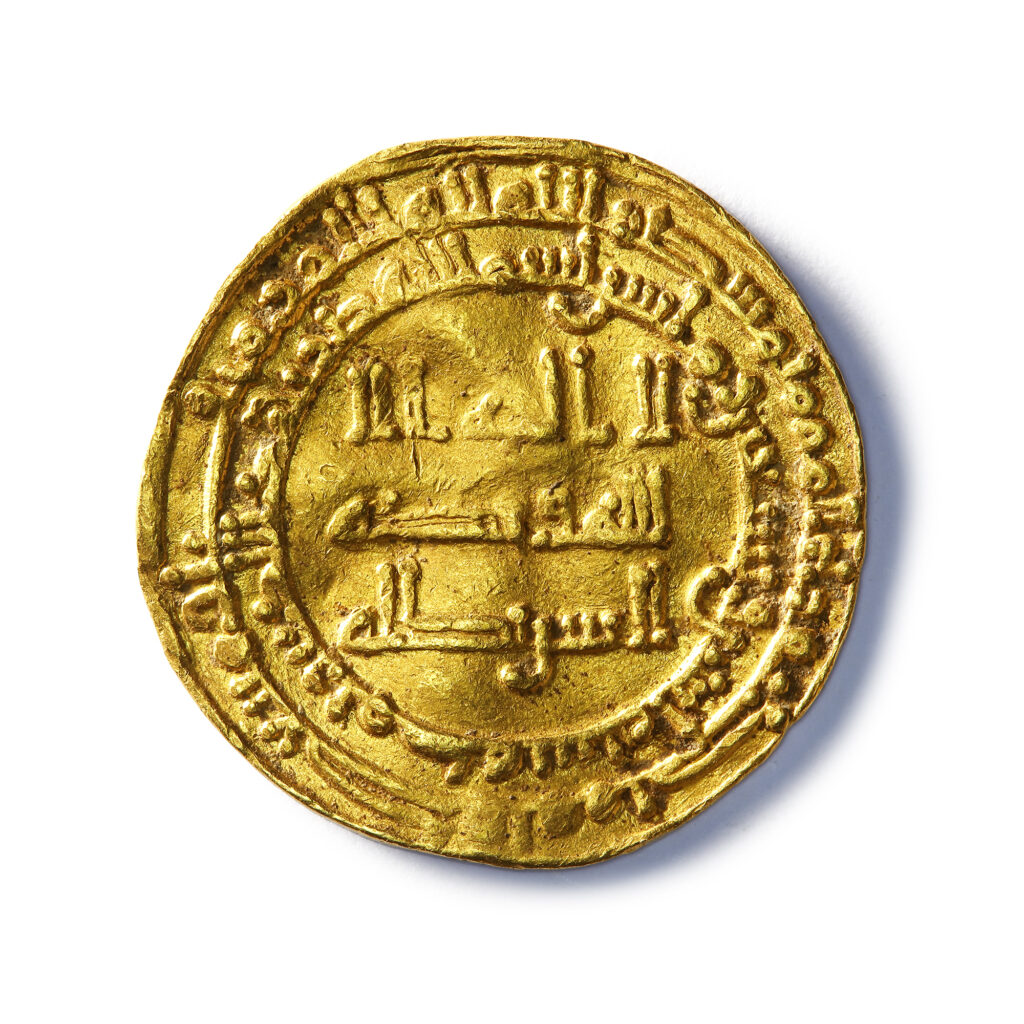The dinar influence on trade in the medieval world was profound, shaping economies across the Middle East, North Africa, and parts of Europe. Introduced in 696 CE by Caliph Abd al-Malik, the Islamic gold dinar quickly became a trusted and stable currency, facilitating commerce along major trade routes. Its consistent gold purity, state-controlled minting, and religious legitimacy made it widely accepted, not just within the Islamic Caliphate but also in Christian Europe, West Africa, and the Silk Road markets.

The Gold Dinar as a Trade Currency
The gold dinar quickly became the standard high-value trade currency throughout the Islamic world and beyond. Several factors contributed to its dominance:
- Consistent Gold Purity – The dinar maintained a stable gold content, making it a trusted store of value in trade.
- State-Controlled Minting – Unlike earlier coinages that were often imitations of Byzantine or Persian money, the dinar was a uniquely Islamic currency with standardized design and production.
- Religious and Economic Legitimacy – Featuring Qur’anic inscriptions instead of rulers’ portraits, the dinar was widely accepted among Muslim merchants and rulers.
As a result, the dinar became the preferred currency for long-distance trade, particularly in:
- The Middle East – The heart of the Islamic world, where the dinar was used in taxation, military payments, and commercial transactions.
- North Africa – The dinar circulated widely in cities such as Cairo, Kairouan, and Fez, linking trade routes between the Mediterranean and Sub-Saharan Africa.
- Europe (Al-Andalus and the Mediterranean) – Islamic Spain (Al-Andalus) became a major trade hub where the dinar was used alongside European currencies.
- The Silk Road and the Indian Ocean – The dinar reached as far as India and China, where merchants exchanged it for spices, textiles, and luxury goods.
The Dinar in Africa: The Trans-Saharan Gold Trade
One of the most important trade networks influenced by the gold dinar was the Trans-Saharan trade route, which connected West Africa to the Islamic world. The Islamic caliphates, particularly under the Abbasids (750–1258 CE), played a crucial role in expanding the gold trade with Africa.
- West African Gold Mines – Regions such as Ghana, Mali, and later Songhai supplied vast amounts of gold to the Islamic world.
- Gold-for-Salt Trade – West African merchants exchanged gold for salt, textiles, and horses from North Africa.
- Mansa Musa’s Gold Pilgrimage (1324 CE) – Centuries later, the famous Malian ruler Mansa Musa traveled to Mecca with so much gold that he caused inflation in Egypt.
The gold dinar became the standard currency used in trade between North Africa and West Africa, reinforcing Islamic economic influence in the region.
The Dinar and European Trade
While the Byzantine Solidus had long been the dominant gold coin in Europe, the Islamic gold dinar gradually gained influence. This was especially true in:
- Al-Andalus (Islamic Spain, 8th–15th Century) – The Umayyad rulers of Córdoba minted their own dinars, which were widely used in trade with Christian Europe.
- Italy & the Mediterranean – Venetian and Genoese merchants traded extensively with Muslim merchants, exchanging European silver for Islamic gold.
- Crusader States (11th–13th Century) – Even the Christian Crusader states in the Levant used dinars in their economic dealings.
By the 10th–12th centuries, European rulers like the Normans of Sicily and the Republic of Venice began minting their own gold coins based on the dinar, such as the Ducat (1284 CE).
Conclusion: The Dinar’s Lasting Economic Influence
The gold dinar was more than just a currency; it was a unifying force in the medieval economy. Its stability, purity, and acceptance across multiple continents helped integrate trade networks from Spain to China, shaping global commerce for centuries. Even after the fall of the Umayyad and Abbasid Caliphates, the dinar’s influence persisted in later Islamic states and even inspired European gold coinage.
